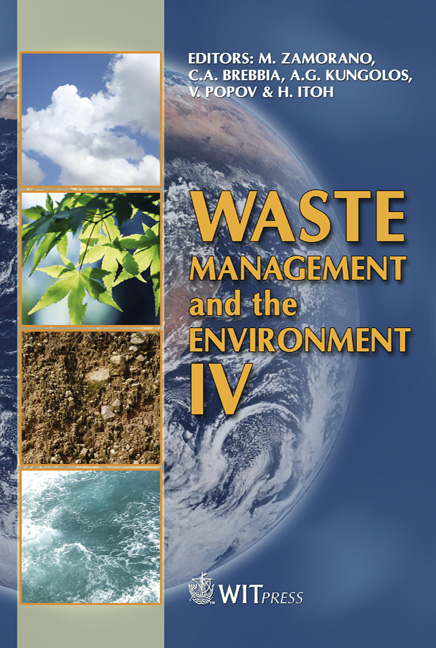A Study On The Starch And Cellulose Industries’ Wastewater Treatment By Biological Methods
Price
Free (open access)
Transaction
Volume
109
Pages
8
Page Range
819 - 826
Published
2008
Size
324 kb
Paper DOI
10.2495/WM080831
Copyright
WIT Press
Author(s)
A. S. Kariman & R. Dabbagh
Abstract
Since the wastewater produced by the starch and cellulose industries has a high level of COD and turbidity, there are various methods for their treatment, one of which is a biological treatment method such as constructed wetlands. In this method, the plants are planted in sand or other different media. It is better that these media have a uniform constancy and the influent and effluent flow to the system and the residence time of wastewater in the biological system must also be adjusted. By increasing the residence time, the elimination rate of COD and turbidity will be increased. As a rule, if it is not possible to increase the residence time, increasing the efficient surface or vegetation accumulation will be better. This project has been carried out from May 1998 to May 1999. Results showed reed (Phragmites spp.) planted wetland as having the ability to treat starch and cellulose industry wastewater. The mean value of COD in the constructed wetland effluent was 93.17mg/L (78% removal) and the values of turbidity, nitrite and pH were 23.04 NTU, 0.19 mg/L and 7.5 respectively. Turbidity removal ranged from 73–98% and the removal of nitrite ranged from 10–55%. The efficiency of the reed planted wetland for treating the above mentioned wastewater was reasonable and in good operational conditions its effluent could be used in agricultural irrigation or discharged into surface water or leaching pits. Keywords: wastewater treatment, starch, cellulose, industries, constructed wetlands, COD, bench scale.
Keywords
wastewater treatment, starch, cellulose, industries, constructed wetlands, COD, bench scale.





